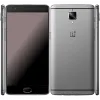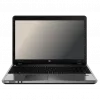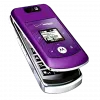Code division multiple access (CDMA) is a channel access method utilized by various radio communication technologies. It should not be confused with the mobile phone standards called cdmaOne and CDMA2000 (which are often referred to as simply "CDMA"), which use CDMA as an underlying channel access method.
One of the basic concepts in data communication is the idea of allowing several transmitters to send information simultaneously over a single communication channel. This allows several users to share a bandwidth of different frequencies. This concept is called multiplexing. CDMA employs spread-spectrum technology and a special coding scheme (where each transmitter is assigned a code) to allow multiple users to be multiplexed over the same physical channel. By contrast, time division multiple access (TDMA) divides access by time, while frequency-division multiple access (FDMA) divides it by frequency. CDMA is a form of "spread-spectrum" signaling, since the modulated coded signal has a much higher data bandwidth than the data being communicated.
An analogy to the problem of multiple access is a room (channel) in which people wish to communicate with each other. To avoid confusion, people could take turns speaking (time division), speak at different pitches (frequency division), or speak in different languages (code division). CDMA is analogous to the last example where people speaking the same language can understand each other, but not other people. Similarly, in radio CDMA, each group of users is given a shared code. Many codes occupy the same channel, but only users associated with a particular code can understand each other.
A CDMA mobile phone
- One of the early applications for code division multiplexing is in GPS. This predates and is distinct from cdmaOne.
- The Qualcomm standard IS-95, marketed as cdmaOne.
- The Qualcomm standard IS-2000, known as CDMA2000. This standard is used by several mobile phone companies, including the Globalstar satellite phone network.
- CDMA has been used in the OmniTRACS satellite system for transportation logistics.
Steps in CDMA Modulation
CDMA is a spread spectrum multiple access technique. A spread spectrum technique is one which spreads the bandwidth of the data uniformly for the same transmitted power. Spreading code is a pseudo-random code which has a narrow Ambiguity function unlike other narrow pulse codes. In CDMA a locally generated code runs at a much higher rate than the data to be transmitted. Data for transmission is simply logically XOR (exclusive OR) added with the faster code. The figure shows how spread spectrum signal is generated. The data signal with pulse duration of T b {\displaystyle T_{b}} is XOR added with the code signal with pulse duration of T c {\displaystyle T_{c}}
. (Note: bandwidth is proportional to 1 / T {\displaystyle 1/T}
where T {\displaystyle T}
= bit time) Therefore, the bandwidth of the data signal is 1 / T b {\displaystyle 1/T_{b}}
and the bandwidth of the spread spectrum signal is 1 / T c {\displaystyle 1/T_{c}}
. Since T c {\displaystyle T_{c}}
is much smaller than T b {\displaystyle T_{b}}
, the bandwidth of the spread spectrum signal is much larger than the bandwidth of the original signal. The ratio T b / T c {\displaystyle T_{b}/T_{c}}
is called spreading factor or processing gain and determines to certain extent the upper limit of total number of users supported simultaneously by a base station











